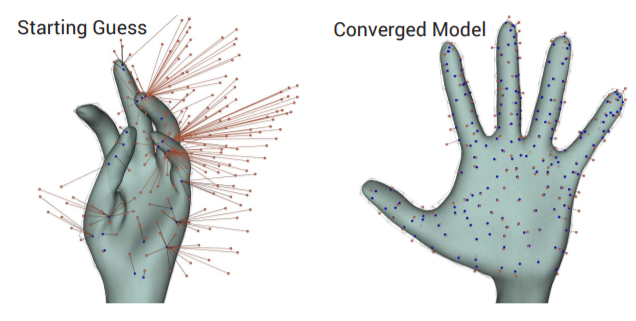Efficient and Precise Interactive Hand Tracking Through Joint, Continuous Optimization of Pose and Correspondences
PubDate: July 2016
Teams: Microsoft Researchk;McMaster University;University of Oxford;University of Abertay;University of Cambridge
Writers: Jonathan Taylor;Lucas Bordeaux;Thomas Cashman;Bob Corish;Cem Keskin;Toby Sharp;Eduardo Soto;David Sweeney;Julien Valentin;Benjamin Luff;Arran Topalian;Erroll Wood;Sameh Khamis;Pushmeet Kohli;Shahram Izadi;Richard Banks;Andrew Fitzgibbon;Jamie Shotton

Abstract
Fully articulated hand tracking promises to enable fundamentally new interactions with virtual and augmented worlds, but the limited accuracy and efficiency of current systems has prevented widespread adoption. Today’s dominant paradigm uses machine learning for initialization and recovery followed by iterative model-fitting optimization to achieve a detailed pose fit. We follow this paradigm, but make several changes to the model-fitting, namely using: (1) a more discriminative objective function; (2) a smooth-surface model that provides gradients for non-linear optimization; and (3) joint optimization over both the model pose and the correspondences between observed data points and the model surface. While each of these changes may actually increase the cost per fitting iteration, we find a compensating decrease in the number of iterations. Further, the wide basin of convergence means that fewer starting points are needed for successful model fitting. Our system runs in real-time on CPU only, which frees up the commonly over-burdened GPU for experience designers. The hand tracker is efficient enough to run on low-power devices such as tablets. We can track up to several meters from the camera to provide a large working volume for interaction, even using the noisy data from current-generation depth cameras. Quantitative assessments on standard datasets show that the new approach exceeds the state of the art in accuracy. Qualitative results take the form of live recordings of a range of interactive experiences enabled by this new approach.

